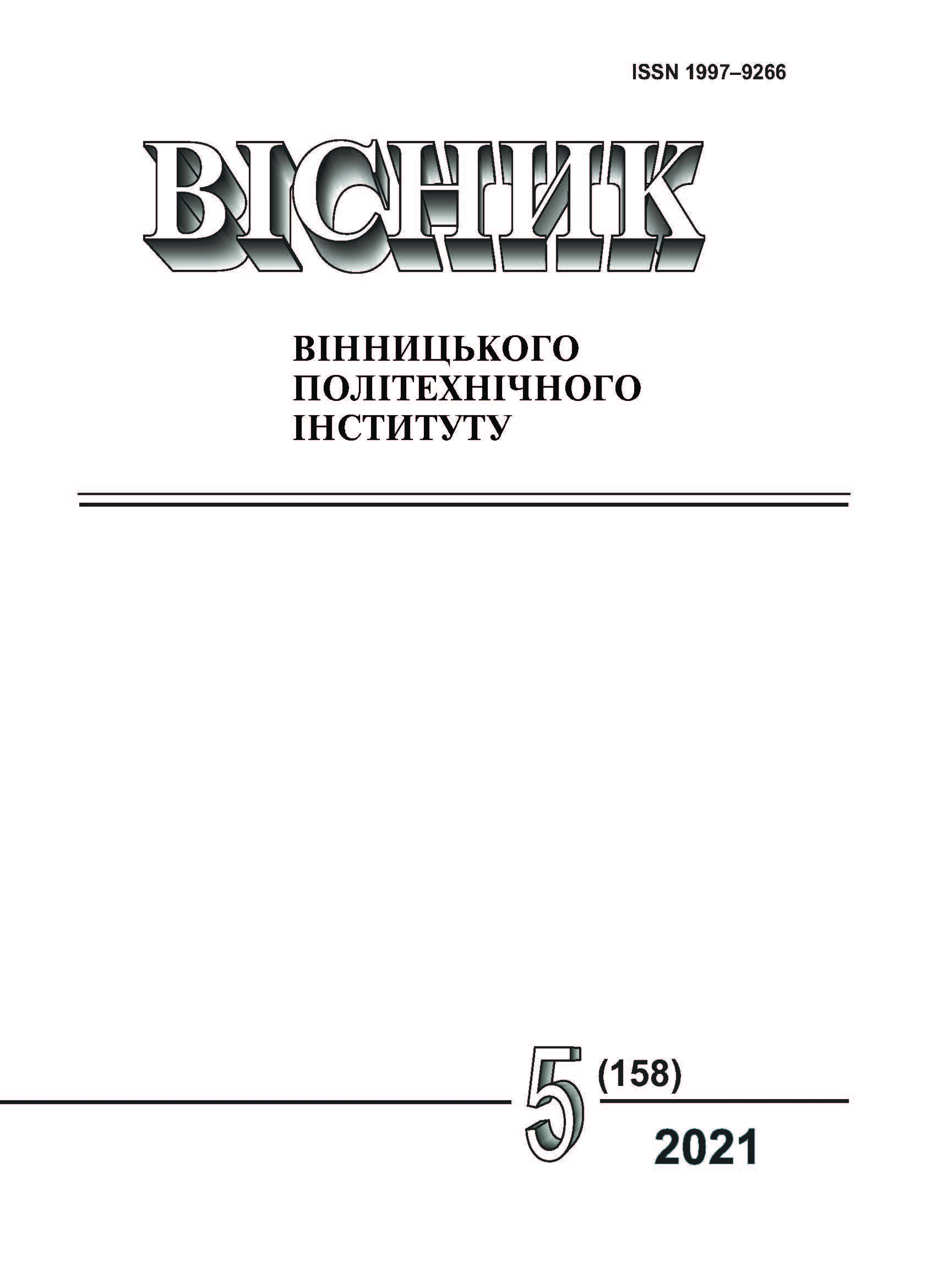Method of Equivalent of the Scheme Using the Methodology of Equilibrium Balance
DOI:
https://doi.org/10.31649/1997-9266-2021-158-5-50-57Keywords:
equivalence, simplification of the electrical circuit, matrix calculation, equilibrium balancing methodAbstract
A new method of equivalence has been developed using the proposed methodology of equilibrium balancing in order to simplify the calculation of equivalent mutual resistances between the nodes of the electrical circuit using matrix transformations of the network structure. The developed method allows, based on the use of the first incidence matrix, to calculate the equivalents of any connections of two circuit nodes. Mathematical models have been created for calculating the full resistance matrix of the existing and virtual circuit branches, which represents all existing interconnections between nodes, taking into account the effects of the adjacent network circuit.
The calculation of equivalent resistances by this method is carried out based on the analysis of the electrical network diagram. Thus, a single input driving current of the initial node and a single output driving current of the end node are set, the remaining driving currents are set to zero. So, the equivalent current in this case will be equal to unity, and the value of the equivalent resistance between the nodes of the circuit will be the sum of the voltage drops at such driving currents. The currents in the branches are determined by multiplying the inverse incidence matrix by the augmented matrix. Finding the equivalent resistances between branches that do not have a direct connection is carried out by supplementing the incidence matrix with additional virtual branches, which make it possible to calculate the value of the mutual equivalent resistances for these branches as well.
The operation of ordinal multiplication of the current by the resistance can be performed before subtracting the columns of the inverse matrix, that is, before the product of the inverse matrix by the augmented incidence matrix, which will allow calculating additional mutual equivalent resistances for the virtual branches. As a result, models for calculating the full matrix of the interdependence of equivalent resistances on branch voltages were obtained.
The values of the equivalent resistances are located on the diagonal of the complete resistance interconnection matrix and can be calculated using a simplified formula as the sum of the products of currents and branch resistances. This method of equivalent circuitry greatly simplifies the calculations of all equivalent circuit resistances due to the use of the equilibrium balancing methodology, it allows calculations for all circuit nodes, establishing the dependence of equivalent resistances on voltage drops.
The aim of the work is to increase the efficiency of the method of equivalence of electrical networks through the use of equilibrium balancing for calculating the steady state of electrical systems, which allows to optimize the calculation processes.
References
П. Л. Воронов, и В. А. Щедрин, «Эквивалентирование и упрощение сложных электрических систем по частям при моделировании,» Вестник чувашского университета, № 1, с. 44-54, 2015.
П. Д. Лежнюк, В. В. Кулик, і А. В. Пашенко, «Розрахунок втрат електричної енергії в електричних мережах 0,38 кВ з використанням АСКОЕ,» Вісник Приазовського державного технічного університету, серія: Технічні науки, с. 36-40, 2005.
В. В. Кулик, А. В. Писклярова, і Д. С. Пискляров, Методи та засоби підвищення точності визначення втрат електроенергії в розподільчих мережах 10(6) кВ з використанням нечітких множин. Вінниця, Україна: УНІВЕРСУМ-Вінниця, 2011.
О. Д. Демов, і Ю. Ю. Півнюк, Оптимізація впровадження та використання компенсувальних установок у розподільних електричних мережах споживачів. Вінниця, Україна: ВНТУ, 2018.
С. Г. Слюсаренко, и П. Ю. Костюк, «Расчёт режимов коротких замыканий и эквивалентирование электрических схем, содержащих ветви с ЭДС,» Известия Томского политехнического университета, т. 312, № 4, с. 100-103, 2008.
О. В. Данилюк, А. Б. Козовий, М. М. Швець, і І. Р. Мельник, «Нейроматематичне еквівалентування нетелемеханізованих фрагментів для задач оперативної оптимізації режимів електричних мереж,» Технічна електродинаміка, № 4, с. 51-57, 2009.
А. Г. Русина, «Особенности эквивалентирования электрических сетей при различных целях функционирования электрических систем,» Проблемы энергетики, № 9-10, с. 41-48, 2010.
Н. В. Савина, и С. В. Тагиров «Декомпозиция электрических сетей как средство упрощения расчета установившихся режимов в условиях рыночной энергетики,» Вестник Амурского государственного университета, № 43, с. 60-64, 2017.
М. Ш. Мисриханов, и В. Н. Рябченко, «Метод эквивалентирования электрической сети на основе матричных делителей нуля,» Электро. Электротехника, электроэнергетика, электротехническая промышленность, № 1, с. 15-18, 2010.
С. В. Бевз, С. М. Бурбело, і В. В. Войтко, «Метод рівноважного балансування та автоматизація розрахунків усталеного режиму електричної мережі засобами MathCAD,» Збірник наукових праць Національного університету кораблебудування ім. адмірала Макарова, № 4, 20 с., 2020.
Downloads
-
PDF (Українська)
Downloads: 327
Published
How to Cite
Issue
Section
License

This work is licensed under a Creative Commons Attribution 4.0 International License.
Authors who publish with this journal agree to the following terms:
- Authors retain copyright and grant the journal right of first publication.
- Authors are able to enter into separate, additional contractual arrangements for the non-exclusive distribution of the journal's published version of the work (e.g., post it to an institutional repository or publish it in a book), with an acknowledgment of its initial publication in this journal.
- Authors are permitted and encouraged to post their work online (e.g., in institutional repositories or on their website) prior to and during the submission process, as it can lead to productive exchanges, as well as earlier and greater citation of published work (See The Effect of Open Access).





